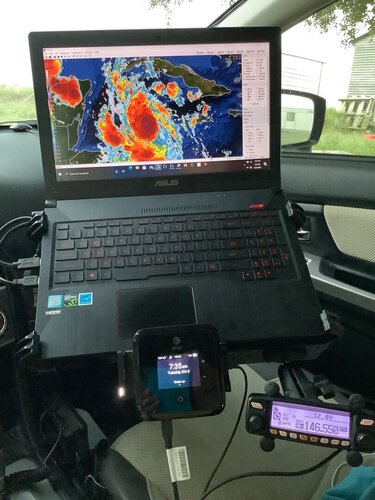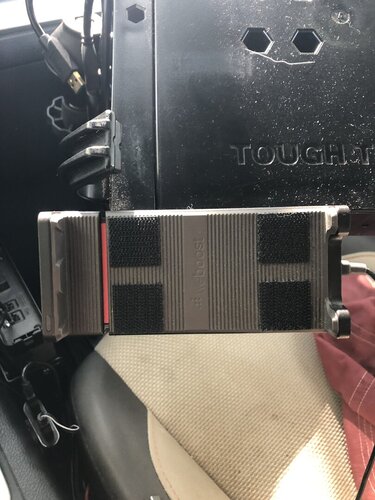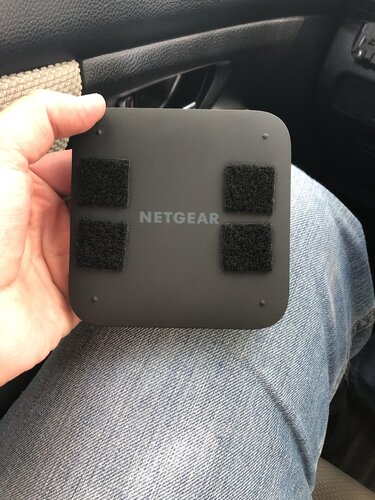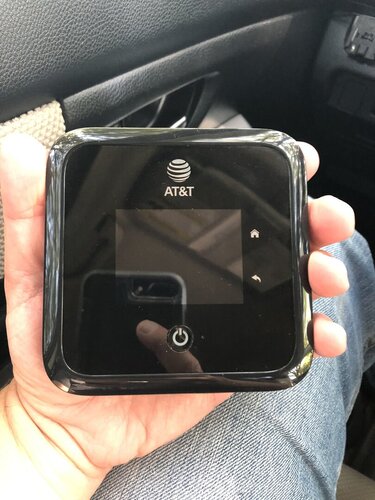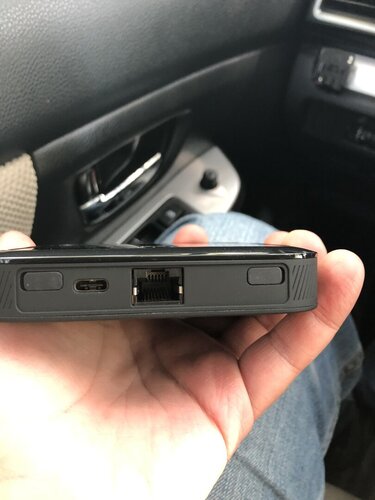-
While Stormtrack has discontinued its hosting of SpotterNetwork support on the forums, keep in mind that support for SpotterNetwork issues is available by emailing [email protected].
You are using an out of date browser. It may not display this or other websites correctly.
You should upgrade or use an alternative browser.
You should upgrade or use an alternative browser.
Dumb/Easy Amp Question
- Thread starter ericjkelly
- Start date
B. Dean Berry
EF4
- Joined
- May 25, 2014
- Messages
- 405
TBF, There seemed to be a lot of set-and-forget amplifiers in the 2G/3G eras, but fewer during the 4G era that proclaimed that in the literature.
I'm not sure how things are going to go with amps and boosters, leading into the 5G era, likewise. Depending on carrier, we're looking at frequencies from 600MHz, well up into the microwave range.
I'm not sure how things are going to go with amps and boosters, leading into the 5G era, likewise. Depending on carrier, we're looking at frequencies from 600MHz, well up into the microwave range.
B. Dean Berry
EF4
- Joined
- May 25, 2014
- Messages
- 405
@Mark Drees I see the control head for a Yaesu FTM-100DR, so another man of culture!
I formerly had one of those, and now have an FTM-7250DR. If Yaesu would make one with zones/banks, like they did with their FT-70DR, it would be perfect.
I formerly had one of those, and now have an FTM-7250DR. If Yaesu would make one with zones/banks, like they did with their FT-70DR, it would be perfect.
Mark Drees
EF2
WeBoost states that their boosters are 5G ready and I was assured that they would be compatible with the sub6 standard that AT&T uses before purchasing the 5100. So far so good as I’ve seen my 5G amplified when in low areas. As for the FTM-100, I’ve been happy with it. My only complaint (not really a complaint as it was my fault) is that I lost the SCU-39 cable that came with it when I moved, so I have to pony up the $75 for a new one if I want to partake in Wires-X.
Drew Terril
Staff member
@Mark Drees I've been thinking of mounting my FTM-400XDR in a similar manner on my laptop mount and am glad to see it works. My SKYWARN stuff is on my Kenwood (VHF) and Moto (UHF), organized into zones, but I keep my APRS beacon running on the Yaesu during chases, and run the YSF stuff when I can. I'm looking into seeing if Oklahoma ARES can leverage APRS like we're trying to leverage DMR.
B. Dean Berry
EF4
- Joined
- May 25, 2014
- Messages
- 405
This might be a totally different type of thread drift, but I'm just at the point where I keep various states' worth of repeaters in different files on my RT software, then dump it in if I'm going to travel to/through an area. I'm actually thinking about giving up the Kenwood TK-5820 and getting a Connect Systems CS800 dual-band just for the DMR, zones, and remote head. None mounted on the laptop mount, though, as I like to keep my stuff in the car all the time.
Drew Terril
Staff member
I just have the OUN and surrounding CWAs in my codeplugs at the moment. It's pretty easy to drift across 2 or 3 during a chase but it's quicker to swap zones of 20 each than scroll through 100+ stored freqs to find what I'm after.
@Mark Drees So have you been able to get a few 5G signals with your MR5100? I really thought about buying one but I'm going to wait a little longer.
Mark Drees
EF2
@Mark Blue most of the I-35 corridor between Austin and Waco is sub6 5G now so it only made sense. I’m thinking about selling the mr1100. I’ve only had it since June, so it’s fairly new.
There you go @Drew Terril!
Glad to hear you're receiving good signal Mark and if you hit some incredible speed realm somewhere I'll look forward to a speed test here. I sure wish AT&T had bigger caps because right now it's expensive for 15GB at $60 per month.
Glad to hear you're receiving good signal Mark and if you hit some incredible speed realm somewhere I'll look forward to a speed test here. I sure wish AT&T had bigger caps because right now it's expensive for 15GB at $60 per month.
Mark Drees
EF2
Yeah...that’s the only drawback. I was hoping they would double the data 30gb/$60 maybe? Hopefully things will change once 5G is readily available.
B. Dean Berry
EF4
- Joined
- May 25, 2014
- Messages
- 405
Want to hear something truly insidious?
After looking into the M1 MR1100, a nominally "GSM" device, I have found that in many cases, even unlocked, it can't really work for the other major GSM carrier in the US. T-Mobile blocks it out, and for what reason I have no idea.
Any decent leads on a Verizon WiFi hotspot that has real external antenna ports, and not test ports?
After looking into the M1 MR1100, a nominally "GSM" device, I have found that in many cases, even unlocked, it can't really work for the other major GSM carrier in the US. T-Mobile blocks it out, and for what reason I have no idea.
Any decent leads on a Verizon WiFi hotspot that has real external antenna ports, and not test ports?
Mark Drees
EF2
Just a heads up, the newer WeBoost boosters will not amplify LTE Bands 14, 30, and 66. Just thought I’d throw that out there.
B. Dean Berry
EF4
- Joined
- May 25, 2014
- Messages
- 405
66 Is the primary prioritization band for T-Mobile, yikes.
I saw the 8800L, but those ports are low-pass test ports. Right now, the most recent Jetpack series that I can find that has an antenna port is the 4620L.
That would just be added to the T-Mobile hotspot available in the car from the Anysecu 4G-WS mobile network radio, and a Sprint Netgear Zing hotspot. Both of those access the same network, just through different bands, with the Zing relying on the old Sprint 25/26/41 slate. I would truly be up in the air on a backup hotspot, whether to go with Verizon or AT&T, but I only plan on making that decision if I do any work in the Plains. Since the merger, I haven't had any problems locally with the Sprint/T-Mobile combined network.
I saw the 8800L, but those ports are low-pass test ports. Right now, the most recent Jetpack series that I can find that has an antenna port is the 4620L.
That would just be added to the T-Mobile hotspot available in the car from the Anysecu 4G-WS mobile network radio, and a Sprint Netgear Zing hotspot. Both of those access the same network, just through different bands, with the Zing relying on the old Sprint 25/26/41 slate. I would truly be up in the air on a backup hotspot, whether to go with Verizon or AT&T, but I only plan on making that decision if I do any work in the Plains. Since the merger, I haven't had any problems locally with the Sprint/T-Mobile combined network.
Similar threads
- Replies
- 11
- Views
- 643
- Replies
- 7
- Views
- 1K
- Replies
- 4
- Views
- 1K

